PERENNIALS > ERYSIMUM > VARIETIES
Reviewed By COLIN SKELLY

Colin is a Horticulturist and Horticultural Consultant with experience in a range of practical and managerial roles across heritage, commercial and public horticulture. He holds the Royal Horticultural Society’s Master of Horticulture award and has a particular interest in horticultural ecology and naturalistic planting for habitat and climate resilience.
IN THIS GUIDE
- 1) E. cheiri (Aegean Wallflower)
- 2) E. ‘Bowles’s Mauve’
- 3) E. ‘Ivory White’
- 4) E. scoparium
- 5) E. menziesii
- 6) E. ‘Golden Jubilee’
- 7) E. capitatum
- 8) E. pallasii
- 9) E. baeticum & E. cazorlense
- 10) E. ‘Night Skies’
- 11) E. ‘Red Jep’
- 12) E. ‘Blood Red’
- 13) E. ‘Constant Cheer’
- 14) E. linifolium ‘Variegatum’
- 15) E. ‘Fair Lady’
- 16) E. ‘Persian Carpet’
- References
ERYSIMUM GUIDES
Propagation
Pruning
Sowing
Varieties
Erysimum species, hybrids, and cultivars are widely used in public parks and formal gardens.
They are used as companion plants, as bed displays, to create blocks of colours, and to make patterns.
As for those garden paintings of clocks and heraldry symbols that one sees, Wallflowers are a common component.
All said, there are over 270 generally-accepted species and that does not include cultivars!1Erysimum. (n.d.). Plants of the World Online. Retrieved May 22, 2023, from https://powo.science.kew.org/taxon/urn:lsid:ipni.org:names:329617-2#children
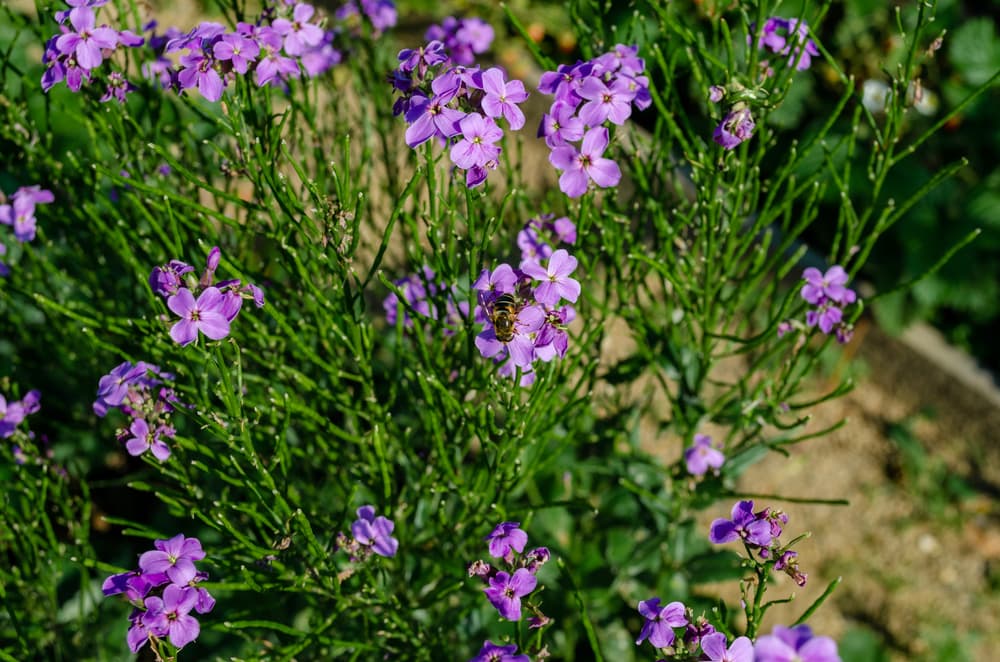
In height, these plants range from as high as 80cm, e.g. Bowles’s Mauve, down to about 22cm which is the size of some dwarf species native to the Alps.
It is hardly possible to do justice to such an interesting and diverse genus in a single article but here is a solid sixteen of my absolute favourites of this sweet-scented plant.
In our quick tour of Erysimum species we must start with E. cheiri and E. ‘Bowles’s Mauve’: E. cheiri is the ‘original’ species from which most British varieties descend and Bowles’s Mauve is probably the most popular cultivar.
1) E. cheiri (Aegean Wallflower)
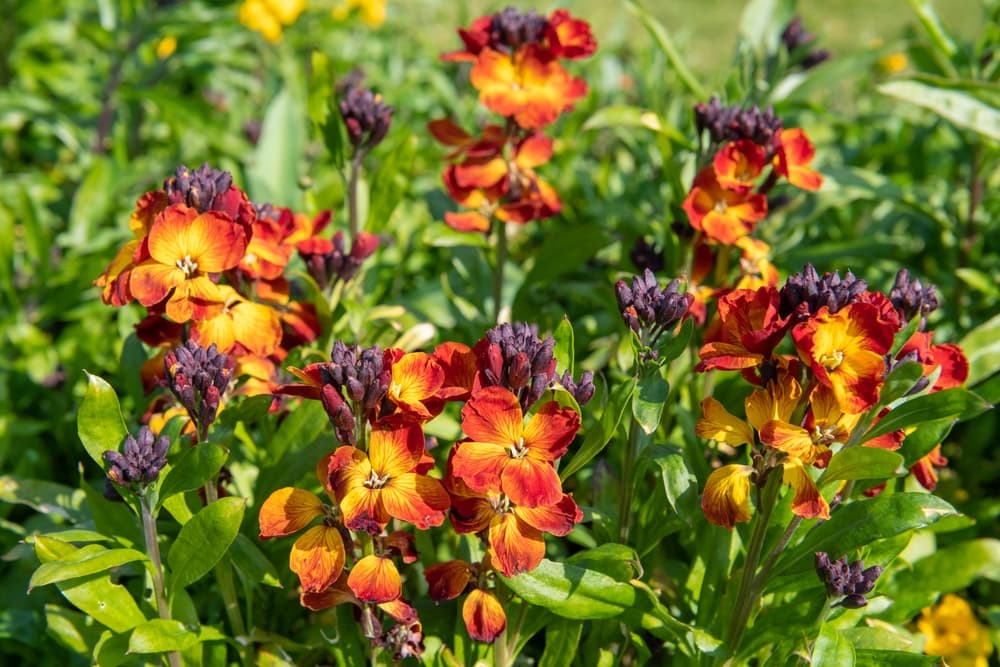
Native to the Mediterranean region but is now a common sight in the UK.
“The wallflower is a good example of an archaeophyte, a plant that has become naturalised outside of its native range before the modern period (modern introductions are known as neophytes),” says Colin Skelly, an RHS verified Master Horticulturist.
“In the UK, introductions prior to the end of the 15th century are regarded as archaeophytes.
“It is thought that they may have come across castle-building Normans. When you grow wallflowers you are part of the long history of the travels and cultivation of this versatile species.”
Though a perennial, it is treated as a biennial.
This fairly tall species bears spikes of scented flowers in clusters.
Their colour varies from a merry golden-yellow to deep orange.
2) E. ‘Bowles’s Mauve’

Flowers from early Spring through mid-Autumn which is one of the reasons it is valued.
The petals are delicate and slightly wrinkly.
The colour varies from a pale lilac to a solid mauve.
The greyish-green lanceolate to linear leaves provide attractive and virtually evergreen foliage.
3) E. ‘Ivory White’
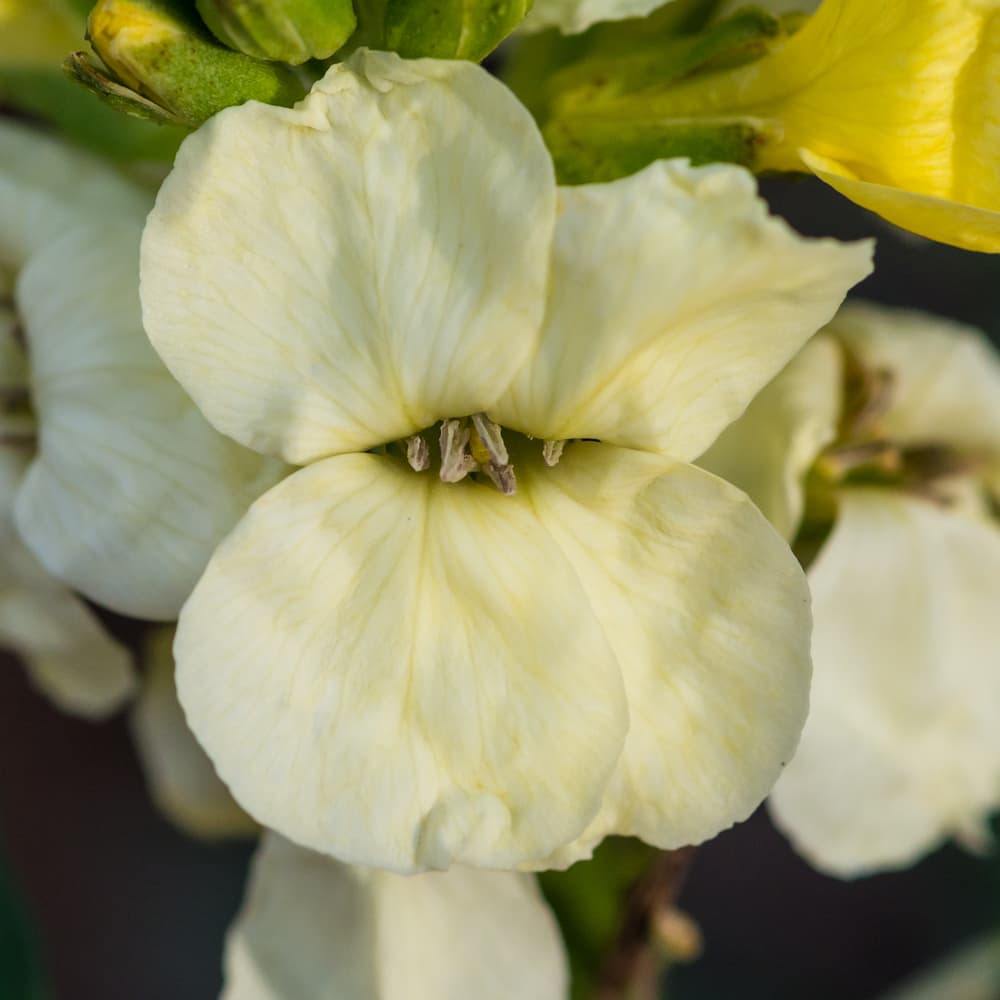
A cultivar of E. cheiri.
The plants are small and bushy, while the rich, creamy ivory white shade of the flower is a soothing tonic for human eyes and the flower itself is a literal tonic for bees which make a ‘beeline’ for these blooms.
These plants are ideal for edging and bordering.
4) E. scoparium

A species native to the montane areas of the Canary Islands.
It is an erect shrub with very attractive flowers in shades of lilac and pale purple.
However, the distinctive feature about this species is that both the leaves and the petals are a perfect match for each other, being very narrow; among the narrowest in this genus.
5) E. menziesii

If you can find it!
It is a rare and endangered species found in a dwindling location in California.
Its foliage is as unusual as the plant; the leaves are very dark and satiny.
The floral petals are distinctively shaped, being rounded and slightly convex, and are of a buttercup hue.
6) E. ‘Golden Jubilee’
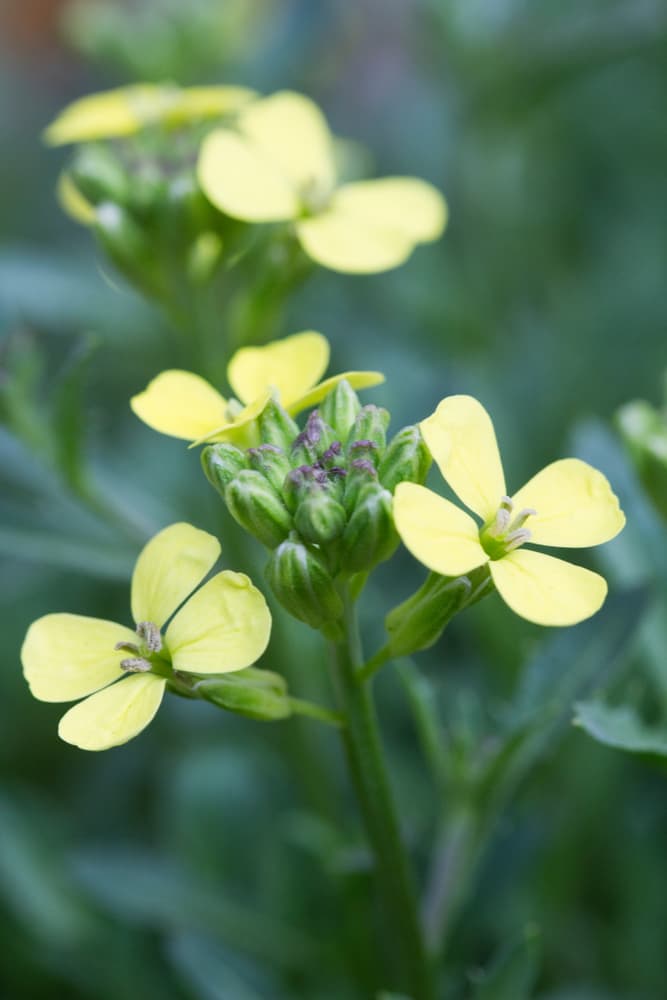
One of the more popular cultivars and if you can’t find E. menziesii, you can use this one as a sub because the flowers are somewhat similar both in shape and in hue.
Where it varies is that this is a clumping, robust species that you’ll have no trouble finding and maintaining.
7) E. capitatum

These species are relatively tall for Erysimum.
While E. asperum is native to the American Mid-West in the wide open prairies, related species E. capitatum is found further north in the North-West and Canada.
The flowers are borne on longish, stiff stalks.
Their petals are wide open almost in a single plane, giving the flower an innocent, frank look.
Their hues, ranging from bright and deep yellow to a mellow orange, add to their appeal.
8) E. pallasii
One of the hardiest species for it is native to Russia’s northernmost regions, Greenland, and North-Western Canada.
It has a woody stem and oblong leaves.
The flowers are petite and have eye-catching mauve to deep purple hues that are very striking against the plant’s foliage.
9) E. baeticum & E. cazorlense
These flowers have virtually the same hue as those of pallasii but the resemblance ends there.
The petals are narrower and more separated; as for the plants, they are endemic to sunny Spain!
They are profuse bloomers; however, the linear leaves are also points of interest as they are nearly as long and narrow as grass blades.
10) E. ‘Night Skies’

A profuse bloomer that can flower until autumn.
The waft of their sweet scent will attract bees to your garden.
The full petals partially overlap in a whorl.
As for the colour, its gentle, soothing tones vary from a perfect baby pink through lilac.
11) E. ‘Red Jep’

A popular perennial.
Bushy, verdant lanceolate foliage sets off the flower perfectly, which features very full, imbricated petals that are typically of a purplish-scarlet tone but can vary from red to purple.
Their fragrance draws bees and it grows to about 30cm.
12) E. ‘Blood Red’
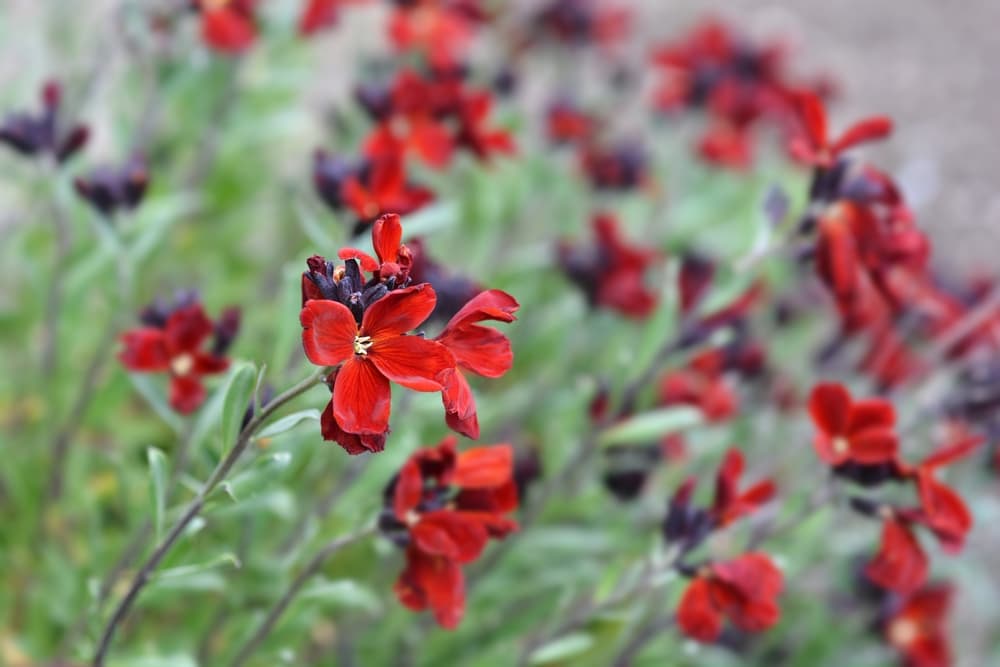
Twice as tall as E. ‘Red Jep’, reaching a height of 60cm; what’s more, it’s hue is probably ten times as intense.
The full petals are wide open and valvate.
No cultivar can be more aptly named, for while the hue is in various tones of deep red and crimson, you will often find it in a perfect ‘blood red’.
This one’s not for the faint of heart!
13) E. ‘Constant Cheer’
A very popular variety and is so named because it blooms ‘constantly’ through spring and summer.
It is a small evergreen perennial with grey-green lance-like leaves.
Their flowers spread ‘cheer’ through their happy tones of orange, pink, mauve, and purple.
14) E. linifolium ‘Variegatum’

One of the unusual Wallflower varieties that takes its name from its ‘variegated’ foliage.
The lanceolate leaves of this perennial are bicoloured; they have a distinct, fairly thick, border of cream-yellow enclosing a mid-tone green.
The intense mauve-to-puple flowers are both striking and very fragrant, doubling – or trebling – this hybrid’s charms.
15) E. ‘Fair Lady’
Could just as well be called ‘Variegatum’ because of its flowers.
Yet that would be an understatement.
This petite sub-shrub’s flowers simply dazzle.
Their pallete is remarkable, ranging from pastel creams and pinks to brilliant vermilion and hot purple.
Best of all, frequently the floral petals themselves are variegated, occurring in tones of cream, yellow, pink, and orange.
16) E. ‘Persian Carpet’

Another variety with multi-coloured and even ‘variegated’ flowers, but this one’s a dwarf variety.
The scented flowers have broad rounded petals and occur in hues of cream and yellow through vermilion and scarlet and even purple.
Sometimes, petals are bi-toned, have streaks, or are clearly gradated, adding to their visual appeal.
References
- 1Erysimum. (n.d.). Plants of the World Online. Retrieved May 22, 2023, from https://powo.science.kew.org/taxon/urn:lsid:ipni.org:names:329617-2#children


